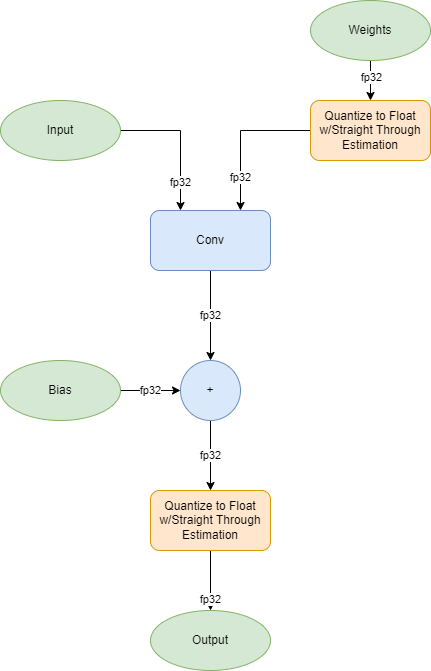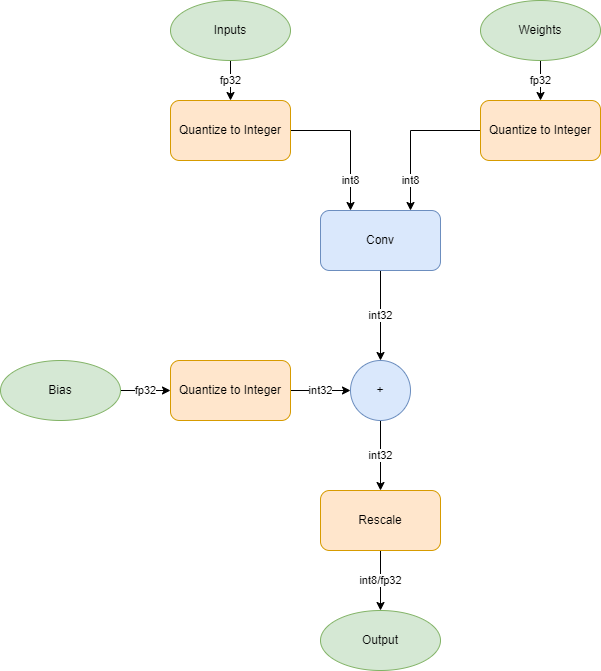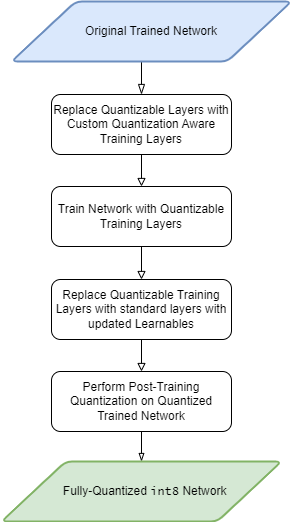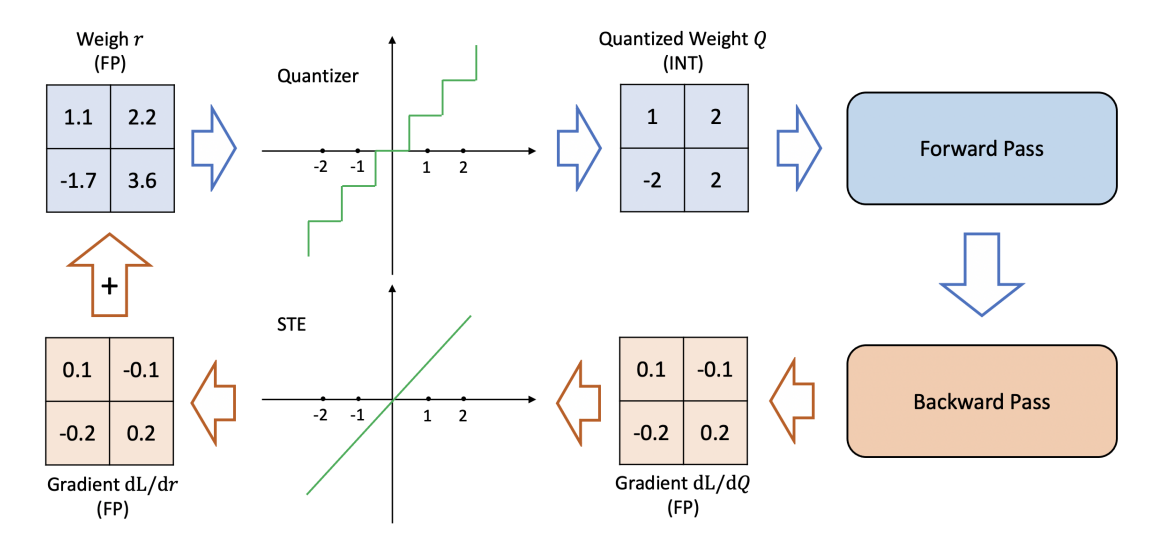This example shows how to perform quantization aware training as a way to prepare a network for quantization. Quantization aware training is a method that can help recover accuracy lost due to quantizing a network to use 8-bit scaled integer weights and biases. Networks like MobileNet-v2 are especially sensitive to quantization due to the significant variation in range of values of the weight tensor of the convolution and grouped convolution layers.
This example shows how pre-processing a network with quantization aware training can produce a quantized network with accuracy on par with the original unquantized network. Note that the values in this table may differ slightly.
| Network | Accuracy |
|---|---|
| Original network | 0.9101 |
int8 network via post-training quantization |
0.2452 |
int8 network via quantization aware training |
0.8937 |
Open and run the live script QuantizationAwareTrainingWithMobilenetv2.mlx.
Additional files:
QuantizedConvolutionBatchNormTrainingLayer: Custom layer that implements quantization aware fused convolution-batch normalization layer.QuantizedConvolutionTrainingLayer: Custom layer unused in this example but can be applied to networks with convolution layers without batch normalization.IdentityTrainingLayer: No-op layer that acts as a placeholder for batch normalization layers.quantizeToFloat: Function to quantize the values to a floating point representation.bypassdlgradients: Function to perform straight through estimation for a given operation. The source of this function is obfuscated because of the use of internal packages.foldBatchNormalizationParameters: function to calculate the adjusted weights and bias for dlnetwork that contains a convolution layer followed by a batch normalization layer. The source of this function is obfuscated because of the use of internal packages.CustomStraightThroughEstimator: helper class used bybypassdlgradientsand should not be used directly.
- MATLAB ® version R2022b or later
- Deep Learning Toolbox ™
- Deep Learning Toolbox Model Quantization Library
This example focuses on the steps of a quantization workflow:
- Replace quantizable layers in a floating-point network with quantization aware training layers.
- Train with the quantizable training layers until reaching convergence.
- Replace the quantizable training layers back with the original layers with updated learnables more robust to quantization.
- Perform post-training quantization on this network to produce a quantized int8 network.
During training, the quantization aware convolution layers quantized the weights and activations of the layer at each forward pass. The function, quantizeToFloat is used to quantize the values to a floating point representation using single type. This operation is akin to quantizing a value to integer and then immediately rescaling the value back to the real-world representation.
As an example, quantizeToFloat would take an input value 365.247 and calculates a scaling factor that is used to scale the value to an integer representation of 91. The integer value of 91 is then rescaled back to 364 introducing a absolute error of -1.247.
The quantization step uses a non-differentiable operation round that would normally break the training workflow by zeroing out the gradients. During quantization aware training, bypass the gradient calculations for non-differentiable operations using an identity function. The diagram below [2] shows how the custom layer calculates the gradients for non-differentiable operations with the identity function via straight-through estimation.
After training, the network returned from the trainNetwork function still has the quantization aware training layers. Replace the quantization aware training operators with operators that are specific to inference. Whereas the training graph operates on pseudo-quantized 32-bit floating-point values, in the inference graph, the network applies the convolution using int8 inputs and weights.
| Conovolution Operation Graph at Training | Convolution Operation Graph at Inference |
|---|---|
 |
 |
- The TensorFlow Team. Flowers http://download.tensorflow.org/example_images/flower_photos.tgz
- Gholami, A., Kim, S., Dong, Z., Mahoney, M., & Keutzer, K. (2021). A Survey of Quantization Methods for Efficient Neural Network Inference. Retrieved from https://arxiv.org/abs/2103.13630
- Jacob, B., Kligys, S., Chen, B., Zhu, M., Tang, M., Howard, A., Adam, H., & Kalenichenko, D. (2017). Quantization and Training of Neural Networks for Efficient Integer-Arithmetic-Only Inference. Retrieved from https://arxiv.org/abs/1712.05877
Copyright 2023 The MathWorks, Inc.



